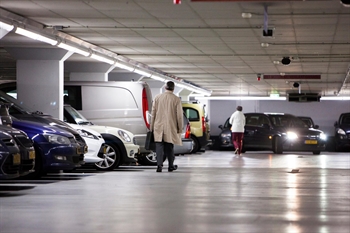Case study Parking policy at Erasmus Medical Centre Rotterdam
The Erasmus Medical Centre in Rotterdam was facing major parking problems. A significant degree of this parking problem was caused by the many employees who came to work by car. Nowadays, they no longer receive travel expenses, but actually have to pay to park. Employees who travel by public transport and/or bicycle do receive a travel allowance.
The Erasmus Medical Centre (MC) in Rotterdam was facing major parking problems. In order to solve the parking problems, the hospital has been addressing parking policy since 2011. This is in combination with an adjustment to the travel budgets. The nearby ‘Museumgarage’ is also partly used by the hospital.
The measure gives employees two options for commuting to and from work:
- a car scheme: employees must pay for the car journey themselves (with no travel expenses). They also pay €3 per day to park (if they live more than 6 km away) or € 8 per day (if they live within a radius of 6 km);
- an individual travel budget (ITB): employees then use public transport/bicycles and are reimbursed €0.15 per kilometre. Employees are also allowed to travel by car 6 times a year (parking costs are then €3 per day).
In the past, employees who had not opted for the car scheme could park free of charge 12 times a year and there was no distinction in commuting distance. The parking fees were also lower than in the current policy. The current policy applies during the day, until 1.30 p.m. After that, employees are allowed to park free of charge in the hospital's car park at any time. This means that employees on late shifts or night shifts can still go home by car if they so wish.
The Erasmus MC has a mobility budget of €7 million per year. This money is mainly spent on the ITB scheme. The income from parking fees paid by employees is not high, but the income from patient and visitor parking compensates this to a considerable extent.
Implementation
In 2009, the Erasmus MC noticed that many employees, patients and visitors travelled by car. This was resulting in traffic jams on routes into and out of the hospital. In addition to visitors and hospital employees, residents of Rotterdam were also inconvenienced by this.
De Verkeersonderneming, a public-private partnership between, amongst others, the city of Rotterdam and Rijkswaterstaat then carried out an accessibility scan and conducted a survey among employees. Furthermore, the current parking policy was evaluated. Based on the findings, the Board of the Erasmus MC commissioned the preparation of a new transport plan with the focus on reducing car traffic. They then gave 'carte blanche' in respect of how this was implemented.
The Erasmus MC wanted to leave the choice of mode of transport open to patients and visitors as much as possible. In the case of employees, the aim was to explicitly discourage car use (and to reduce parking demand), but not to prohibit it. The aim was to create a credible product that would entice employees to change their behaviour themselves.
The hospital worked on this measure with De Verkeersonderneming, which carried out the accessibility scans, among other things. The Erasmus MC is also a member of R10, a platform of employers in Rotterdam and the surrounding region, in which they discuss solutions and smart mobility. Finally, Erasmus MC collaborates with other hospitals, not least in the fields of mobility and parking policy.
Results
Now, less than 9% of employees still use the car scheme. This means that around 1,000 employees travel by car, compared with almost 4,000 in the past. More than 10,000 employees now use an ITB. On average, this group only travels by car three times per year, although they are allowed to do so six times per year. Use of bicycles has skyrocketed among employees. There are now more than 5,000 bicycle parking spaces at the hospital. The combination of public transport and cycling is also popular. Since the new policy was introduced, CO2 emissions have dropped significantly. The use of parking spaces by staff has fallen considerably.
The Erasmus MC considers the policy to be a success. The above figures already show this, but it is also a success because the employees rarely complain about it. This is mainly because good travel products have been made available to compensate for the fact that fewer parking spaces are available. Furthermore, patients, the hospital’s customers after all, were experiencing numerous accessibility problems. Employees understood that something had to be done about that. The Parking Policy fact sheet provides more information about this measure and its effects.
Considerations for deployment elsewhere
Adjustments to the parking policy, or in fact the entire mobility policy, can also be implemented at other organisations. This concerns the combination of process and implementation in particular:
- Endorse your message: ensure that you have backing and and broad support for your message.
- Provide a credible product: also offer something to your employees.
- Do not forbid anything: it is all about discouraging and enticing.
- Use leverage, where possible: connect with current developments or projects in which your policy could help.
- Ensure equality: do not make an exception for certain professional groups. At the Erasmus MC, the scheme applies to every employee (with the exception of emergency, evening and night shifts).
